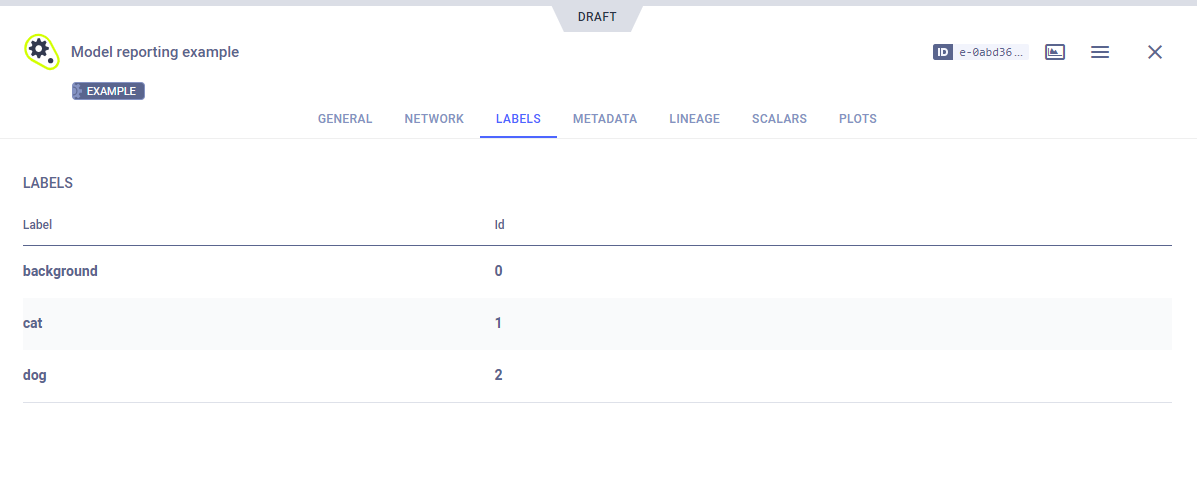Model Reporting
The model_reporting.py example demonstrates logging a model using the OutputModel class.
The example does the following:
- Creates a task named
Model reporting examplein theexamplesproject. - Uses an OutputModel object to register a previously trained model and log its label enumeration.
Initialization
An OutputModel object is instantiated for the task.
from clearml import Task, OutputModel
# Connecting ClearML with the current process,
task = Task.init(project_name="examples", task_name="Model logging example")
# Create output model and connect it to the task
output_model = OutputModel(task=task)
Label Enumeration
Set the model's label enumeration using OutputModel.update_labels().
labels = {"background": 0, "cat": 1, "dog": 2}
output_model.update_labels(labels)
Registering Models
Register a previously trained model using OutputModel.update_weights().
The example code uses a model stored in S3.
# Manually log a model file, which will have the labels connected above
output_model.update_weights(register_uri=model_url)
WebApp
The model appears in the task's ARTIFACTS tab.

Clicking on the model name takes you to the model's page, where you can view the model's details and access the model.
The model's LABELS tab displays its label enumeration.

Additional Example
See PyTorch Model Updating for a more robust example, which trains a model, and then logs it with OutputModel.